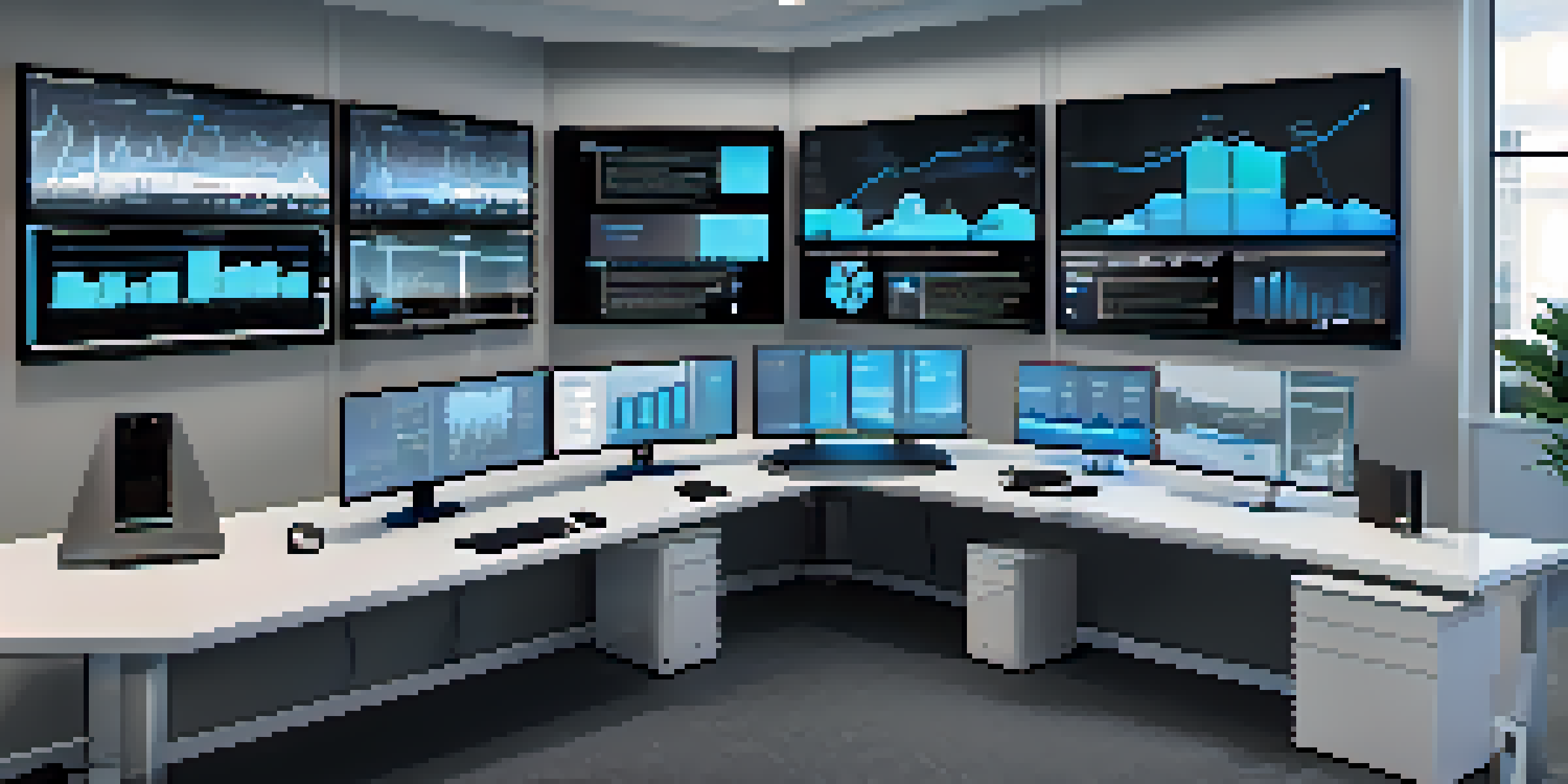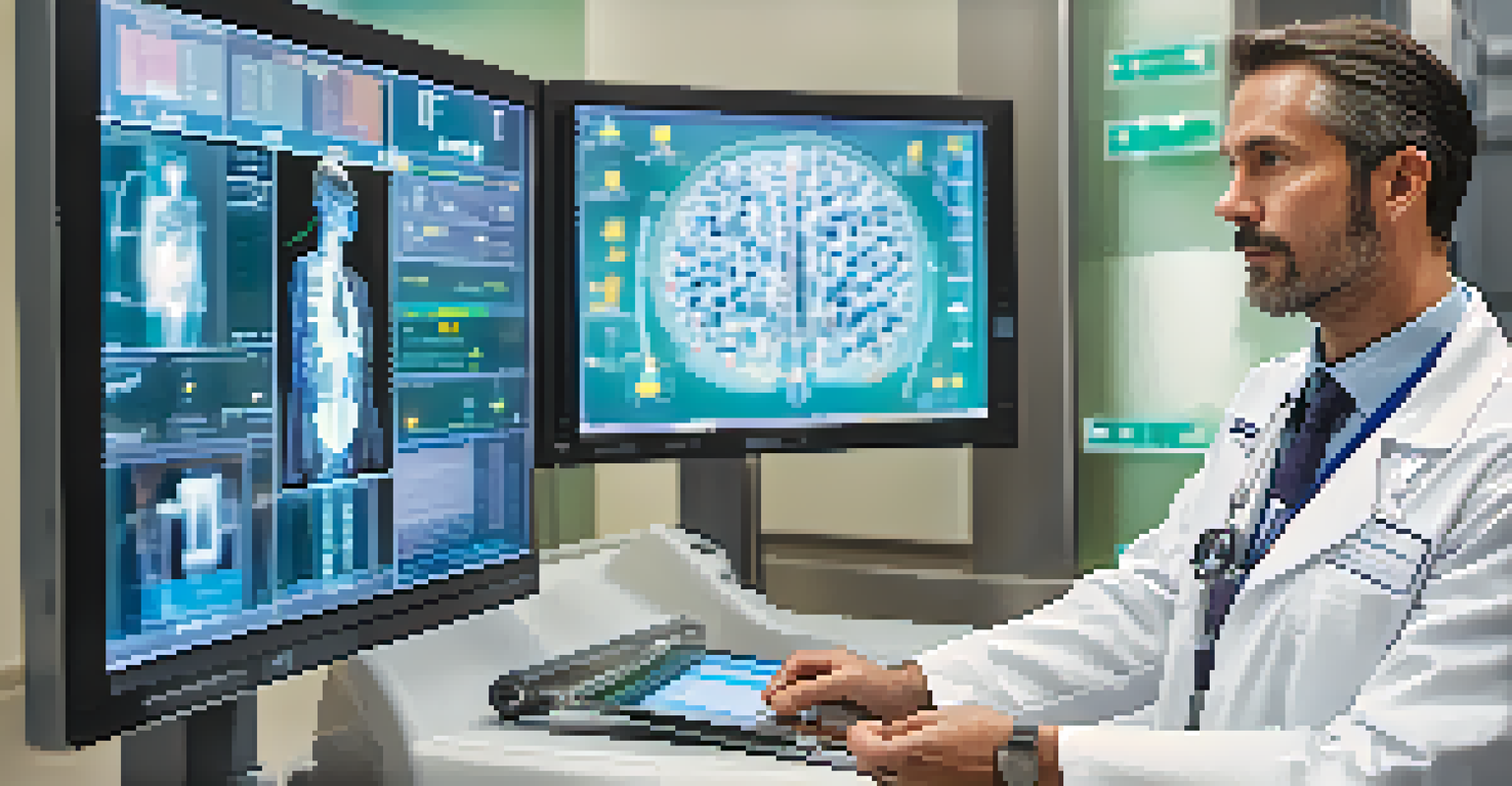Understanding Remote Monitoring Technologies for Businesses

What is Remote Monitoring Technology and Why It Matters
Remote monitoring technology refers to systems that allow businesses to track and manage assets, processes, and performance from a distance. This can include anything from monitoring machinery in a factory to overseeing IT infrastructure across multiple locations. The ability to gather real-time data remotely can greatly enhance decision-making and operational efficiency.
The greatest danger in times of turbulence is not the turbulence; it is to act with yesterday's logic.
For instance, consider a manufacturing plant that uses sensors to monitor equipment health. By collecting data on temperature, vibration, and performance, the plant can predict maintenance needs before a breakdown occurs, reducing downtime. This proactive approach not only saves money but also improves overall productivity.
In today's fast-paced business environment, understanding and implementing remote monitoring technologies can provide a competitive edge. Businesses that adopt these innovations often find themselves better equipped to respond to challenges and seize new opportunities.
Key Components of Remote Monitoring Systems
Remote monitoring systems typically consist of sensors, data transmission tools, and software analytics platforms. Sensors collect data from various sources, such as machines or environmental conditions, while transmission tools send this data to a central location. Finally, software analytics processes the data to provide actionable insights.

For example, a smart building might use sensors to monitor energy consumption and adjust heating or cooling automatically. This not only improves energy efficiency but also enhances the comfort of occupants. By integrating these components, businesses can create a seamless monitoring experience.
Remote Monitoring Enhances Efficiency
Remote monitoring technology allows businesses to track performance and make informed decisions, leading to improved operational efficiency.
Understanding these components is crucial for businesses looking to implement remote monitoring technologies. Each part plays a vital role in ensuring that the system operates effectively and delivers valuable insights.
Benefits of Implementing Remote Monitoring Technologies
The benefits of remote monitoring technologies are vast and varied. They can lead to improved efficiency, reduced operational costs, and enhanced employee productivity. By gaining insights into operations, businesses can make informed decisions that drive growth.
In the age of information, ignorance is a choice.
For instance, a logistics company using remote monitoring can track delivery vehicles in real-time, optimizing routes and reducing fuel consumption. This not only saves money but also leads to faster delivery times, improving customer satisfaction. Such technologies can transform the way businesses operate.
Moreover, remote monitoring can provide businesses with a way to ensure compliance with industry regulations. By continuously monitoring systems, companies can quickly identify and rectify potential issues before they escalate, safeguarding their reputation and bottom line.
Challenges of Remote Monitoring Technologies
While the advantages of remote monitoring are compelling, there are challenges that businesses must navigate. Issues such as data security, integration with existing systems, and the need for ongoing maintenance can pose hurdles. Companies must ensure that they have robust cybersecurity measures in place to protect sensitive data.
Another challenge is the potential for information overload. With so much data being collected, it can be difficult to discern what is essential. Businesses need to focus on establishing clear objectives and key performance indicators (KPIs) to guide their monitoring efforts.
Key Components Drive Success
Successful remote monitoring systems rely on sensors, data transmission tools, and software analytics to provide actionable insights.
Despite these challenges, many businesses find that the benefits outweigh the drawbacks. By addressing these issues head-on, companies can develop effective remote monitoring strategies that enhance their operations.
Real-World Applications of Remote Monitoring
Remote monitoring technologies are being applied across various industries, showcasing their versatility. In healthcare, for instance, remote patient monitoring systems allow doctors to track patients' vital signs from afar, ensuring timely interventions. This not only improves patient care but also reduces hospital visits.
In agriculture, farmers use remote monitoring to track soil moisture and weather conditions, enabling better irrigation management. This precision agriculture approach not only conserves water but also increases crop yields, demonstrating the technology's impact on sustainability.
These examples highlight how diverse industries are leveraging remote monitoring to improve processes and outcomes. As technology continues to evolve, we can expect to see even more innovative applications in the future.
Choosing the Right Remote Monitoring Solution
Selecting the right remote monitoring solution is crucial for businesses looking to enhance their operations. Factors to consider include the specific needs of the business, the scalability of the solution, and the level of support offered by the vendor. It's essential to conduct thorough research and possibly seek expert advice.
For example, a small business may require a simpler, cost-effective solution, while a large corporation might need a more complex system capable of handling vast amounts of data. Understanding these differences can help businesses make informed decisions that align with their goals.
Future Innovations Are Promising
Advancements in AI and machine learning will enhance remote monitoring technologies, shaping the future of business operations.
Ultimately, the right remote monitoring solution should streamline processes and provide actionable insights without overwhelming the user. This balance is key to successful implementation and long-term benefits.
The Future of Remote Monitoring Technologies
The future of remote monitoring technologies is bright as innovations continue to emerge. With advancements in artificial intelligence and machine learning, systems are becoming more sophisticated, enabling predictive analytics and automated decision-making. This evolution will likely enhance the effectiveness of remote monitoring even further.
As businesses increasingly embrace digital transformation, remote monitoring will play a pivotal role in shaping their operations. From smart cities to connected factories, the possibilities are endless. Companies that invest in these technologies now will likely be better positioned for success in the future.

In conclusion, the ongoing development of remote monitoring technologies presents exciting opportunities for businesses across all sectors. Staying informed and adaptable will be key to leveraging these advancements to their fullest potential.